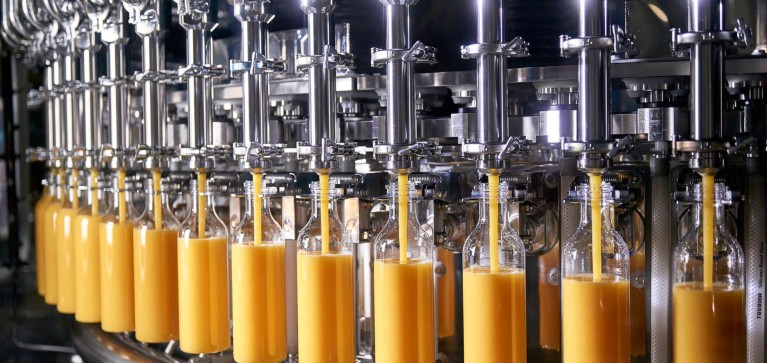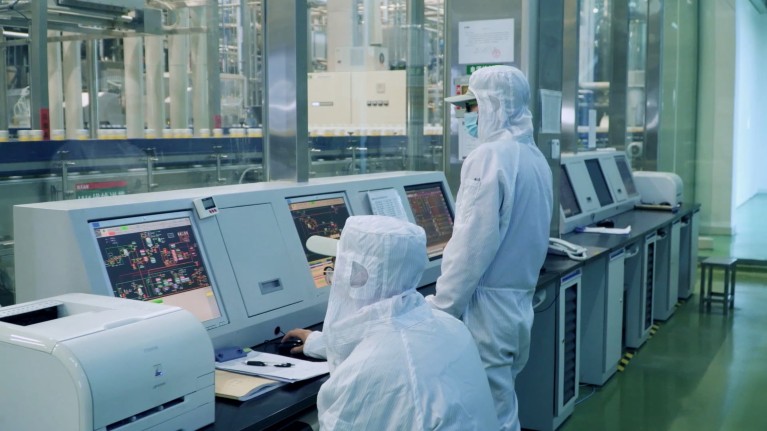
Nongfu Spring uses an aseptic cold fill technique developed to reduce plastic waste and improve quality.Credit: Nongfu Spring
In winter, temperatures in the forests of the Changbai Mountain, in China’s Jilin province, fall well below freezing. The conditions may be tough for residents, but a forward-thinking manufacturer is turning the chill to its advantage in reducing carbon emissions.
Famous for its rich biodiversity and numerous springs, the region is home to Nongfu Spring, a leading Chinese beverage company that processes and produces bottled water using water sources from the reserve. While a factory like Nongfu Spring’s usually needs refrigeration to cool the production site, Nongfu Spring’s innovators have tapped into the unique natural environment.

Credit: Nongfu Spring
By leveraging the power of the cold weather, a range of low-carbon technologies have been adopted, such as replacing refrigerated chillers with cooling towers, says Nongfu Spring’s Wang Weiwei, director of its Office of Public Policy and Sustainable Development. The company also takes advantage of local natural resources, such as biofuel from forest industry residues in place of coal for production and heating. These initiatives have reduced Nongfu Spring’s electricity consumption by about 44,000 kWh per month.
Cutting emissions
Nationwide, the use of multiple renewable energy has also been more widely implemented: one of Nongfu Spring’s sites in southern China uses photovoltaic panels to harness the sun; while another site at Emei Mountain in the country’s southwest gets nearly 100% of its electricity from hydroelectricity.
Established in 1996, Nongfu Spring manufactures bottled drinking water, tea and juice products, sourced from eleven key water sources and two fruit-growing sites. Today the company continues to make great strides in transitioning to lower emissions, based on scientific evidence and collaboration with researchers.
Nongfu Spring delivers goods all over China, so distribution is another area where it attempts to reduce emissions.
A 2019 report published by the International Energy Agency found rail to be the most energy-efficient and lowest-emitting option for freight, so Nongfu Spring is accelerating the improvement of rail transport coverage.
“Although the food and beverage market is dominated by road transport, our factories nationwide employ a variety of transport modes, including road, rail and water,” says Wang.
In 2020, Nongfu Spring transported more than 3 million tonnes of product by rail, and this figure is set to double by 2025.
Reducing waste
Another area of focus is plastic packaging, which often ends up in landfill or the ocean. Nongfu Spring’s experts have come up with two solutions: reduce the weight of bottles and undertake more recycling. Instead of hot filling, where beverages are heated to remove bacteria then placed in bottles, Nongfu Spring uses an ‘aseptic cold fill’ technique, pouring products into containers at an ambient temperature under sterile conditions. This overcomes the limitations of heat, which distorts lightweight plastic bottles, while improving product quality.
“By upgrading to aseptic cold fill technology, the weight of individual bottles can be reduced by 10–15%, minimizing the carbon footprint of raw materials,” says Wang.
In 2021, Nongfu Spring and a manufacturing partner recycled nearly 2 million 19-litre water drums made of polycarbonate, a high-strength plastic, to produce computer accessories, automotive parts, and other products. Meanwhile, 99% of Nongfu Spring’s plastic packaging materials for water and beverages products were recyclable.
The company continues to look for more ways to contribute to carbon neutrality. “We are collaborating with industry associations, universities and research institutes to explore additional sustainable recycling paths for food-contact packaging materials,” explains Wang.
This advertisement appears in Nature Index 2022 Innovation, an editorially independent supplement. Advertisers have no influence over the content of the editorial articles within this supplement.


